Top Things to Do Near Lugou Bridge in Wanping City: A Traveler’s Guide
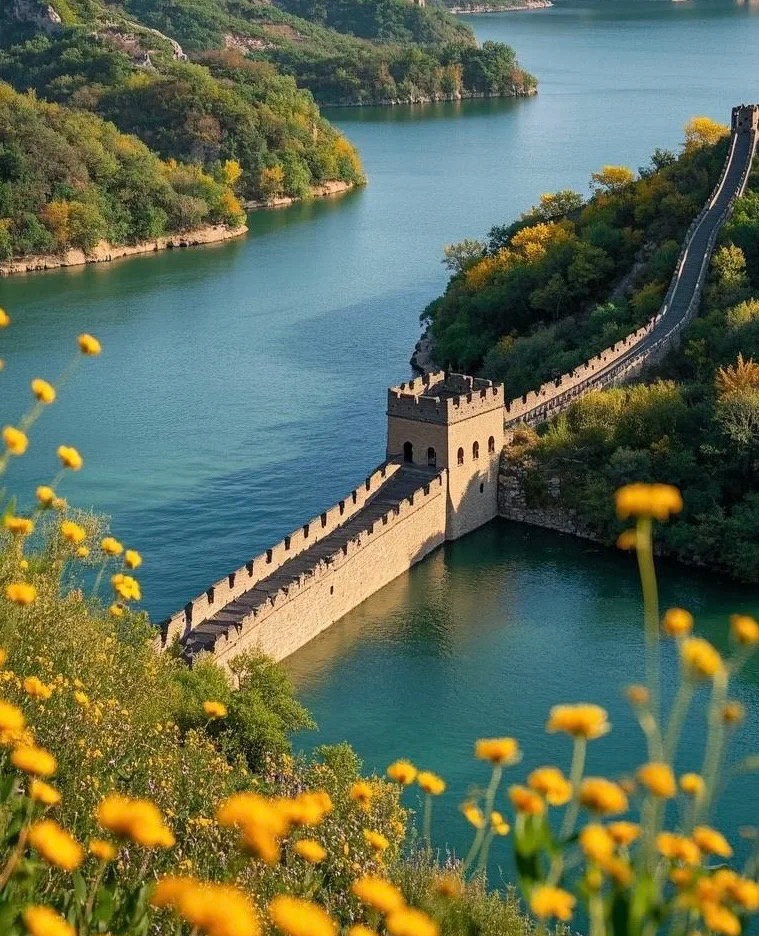
An Essential Guide to Visiting Lugou_Bridge_Wanping_City
Nestled in the southwestern outskirts of Beijing, the illustrious Lugou Bridge, also known as Marco Polo Bridge, stands as a remarkable testament to China’s rich history and architectural prowess. Spanning the scenic Yongding River, this ancient stone bridge dates back to the Jin Dynasty and is renowned for its impressive craftsmanship, adorned with a stunning array of stone lions—over 500 of them, each unique and meticulously carved. As you stroll across its 266.5-meter length, you’ll not only marvel at the intricate artistry but also feel the weight of history, as this site was pivotal during the outbreak of the Second Sino-Japanese War in 1937.
Just a stone’s throw away lies Wanping City, a well-preserved Ming and Qing dynasty fortress that adds another layer of historical significance and charm to your visit. With its ancient walls, watchtowers, and bustling streets, Wanping City invites travelers to step back in time and experience the echoes of a bygone era. From exploring the rich cultural heritage displayed in its museums to enjoying the serene ambiance along the riverbanks, this destination promises a captivating journey through China’s past.
Whether you’re a history buff, an architecture enthusiast, or simply seeking a serene escape from the bustling city, Lugou Bridge and Wanping City offer an enriching experience that beautifully intertwines nature, culture, and the indomitable spirit of resilience. Prepare to be enchanted as you uncover the stories that these historic sites hold, and don’t miss the chance to immerse yourself in the breathtaking scenery that surrounds them.
In This Guide
- An Essential Guide to Visiting Lugou_Bridge_Wanping_City
- The Rich History and Legends of Lugou_Bridge_Wanping_City
- Main Highlights: What You Absolutely Can’t Miss
- Planning Your Visit: A Practical Guide
- Tickets: Prices, Booking, and Tips
- How to Get There: A Complete Transportation Guide
- Local Cuisine and Accommodation Nearby
- Frequently Asked Questions
- Final Thoughts on Your Trip
The Rich History and Legends of Lugou_Bridge_Wanping_City
Nestled in the heart of Beijing’s Fengtai District, the stunning Lugou Bridge, also known as the Marco Polo Bridge, stands as a testament to China’s rich historical tapestry. Constructed during the Jin Dynasty, its origins date back to 1189 when it was first designed as a vital crossing over the Yongding River. The bridge not only served as a crucial transportation route between Beijing and Wanping City but also became a significant architectural marvel, celebrated for its elegant design and intricate stone carvings.
Lugou Bridge stretches 266.5 meters in length and is renowned for its robust structure, featuring 11 arches that gracefully rise over the river. The bridge is adorned with 501 stone lions of various shapes and sizes, each carved with exquisite detail, showcasing the artistry of ancient Chinese craftsmen. These lion sculptures have inspired legends and tales, with locals often playfully debating their exact number, contributing to the bridge’s cultural mystique.
The bridge’s historical significance escalated dramatically during the Second Sino-Japanese War, when it became the site of the infamous Lugou Bridge Incident on July 7, 1937. This event marked the beginning of full-scale war between China and Japan and is a poignant reminder of the resilience and bravery of the Chinese people during these tumultuous times. The nearby Wanping City, with its well-preserved Ming and Qing architecture, serves as a historical backdrop where visitors can reflect on the events that unfolded here. The city walls still bear the scars of conflict, with bullet holes serving as silent witnesses to a painful past.
One of the bridge’s most celebrated features is its inscription “Lugou Xiaoyue,” penned by Emperor Qianlong, which translates to “The Moon over Lugou.” This phrase encapsulates the bridge’s enchanting beauty, especially during twilight when the moon casts a shimmering glow over the stone structure. Visitors often find themselves captivated by the serene atmosphere, making it an ideal spot for reflection and photography.
Adjacent to Lugou Bridge, the Anti-Japanese War Memorial Park commemorates the heroism of those who fought bravely during the war. This park houses a collection of sculptures and memorials that honor the sacrifices made by countless individuals. Each year, various memorial activities take place here, reinforcing the site’s importance as a patriotic education base.
For those seeking a peaceful escape from the bustling city, Lugou Bridge and Wanping City offer a unique blend of natural beauty, historical depth, and cultural significance. Whether you are wandering across the bridge, admiring the intricate lion sculptures, or exploring the ancient streets of Wanping City, you will find that this area is not just a picturesque destination but a profound chapter in the story of China’s enduring spirit.

Lugou_Bridge_Wanping_City.
Main Highlights: What You Absolutely Can’t Miss
When visiting Lugou Bridge and Wanping City, you’re stepping into a realm where history, culture, and breathtaking architecture intertwine to create an unforgettable experience. Here are the must-see highlights that will leave a lasting impression on your journey.
The Iconic Lugou Bridge
As one of China’s Four Famous Bridges, Lugou Bridge (also known as Marco Polo Bridge) is a remarkable feat of ancient engineering that dates back to the Jin Dynasty. Spanning 266.5 meters, this stone arch bridge is adorned with 501 intricately carved stone lions, each showcasing unique expressions and postures. These sculptures are a testament to the exceptional craftsmanship of ancient artisans.
Be sure to walk along the bridge at sunset, when the golden light casts enchanting reflections on the water below, creating a picturesque scene that photographers and romantics alike will cherish.
Historical Significance
Beyond its architectural beauty, Lugou Bridge played a pivotal role in Chinese history. It was the site of the infamous Lugou Bridge Incident in 1937, which marked the beginning of the full-scale war against Japanese aggression. Today, the bridge stands not only as a stunning landmark but also as a solemn reminder of the resilience and courage of the Chinese people.
Nighttime Magic: “Lugou Xiaoyue”
Don’t miss the opportunity to experience “Lugou Xiaoyue,” one of the Eight Great Sights of Beijing, especially during the Mid-Autumn Festival. The scene of the full moon rising over the bridge is nothing short of magical, as the tranquil ambiance invites you to reflect on the rich history and cultural significance of this ancient structure.
The Architectural Marvel of Wanping City
Just a stone’s throw from the bridge lies Wanping City, a well-preserved Ming and Qing dynasty fortress. This ancient city wall, with its imposing gates and watchtowers, offers a glimpse into the military architecture of the past. Enter through the East Gate (Shunzhi Gate) and wander through the winding alleys lined with traditional structures, including temples and government buildings.
The Anti-Japanese War Memorial
A visit to the Anti-Japanese War Memorial within Wanping City is essential for understanding the historical context of the area. The museum showcases artifacts, photographs, and narratives from the war, bringing to life the courage and sacrifices made by the Chinese people during this tumultuous period. This site serves as a poignant reminder of the struggles endured and the resilience shown by the nation.
The Stone Lions and Sculptures
While exploring Lugou Bridge, take time to appreciate the diverse stone lion sculptures that line the bridge’s railings. These magnificent works of art, with their expressive forms, create a captivating atmosphere that draws visitors in. Each lion tells a story, making it a delightful challenge to count them—though it is said that no one has successfully counted all 501!
Tips for Your Visit
- Best Time to Visit: Arrive early in the morning or later in the afternoon to avoid crowds and enjoy a more peaceful experience.
- Comfortable Footwear: The terrain can be uneven, so wear sturdy shoes to navigate the area comfortably.
- Photography: The late afternoon light and nighttime scenes are ideal for photography, so bring your camera or smartphone to capture the beauty.
Exploring Lugou Bridge and Wanping City is not just a sightseeing excursion; it’s a journey through time that immerses you in the rich tapestry of Chinese history and culture. Whether you’re an avid history buff, an architecture enthusiast, or simply seeking a picturesque spot to unwind, these highlights are sure to enchant and inspire.
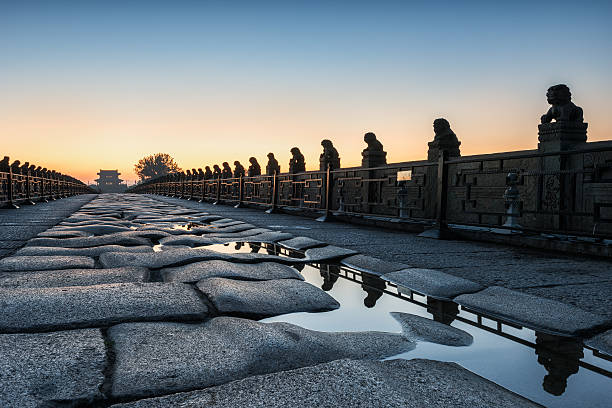
Lugou_Bridge_Wanping_City.
Planning Your Visit: A Practical Guide
When planning your visit to the historic Lugou Bridge (also known as Marco Polo Bridge) and Wanping City, you’ll be stepping into a captivating realm rich in history and culture. This guide will help you navigate your visit, ensuring a memorable experience as you explore one of China’s most significant historical sites.
Getting There
Location: Lugou Bridge is situated approximately 15 kilometers southwest of Tiananmen Square in Beijing, in the Fengtai District along the banks of the Yongding River.
Transportation:
– Public Transport: Numerous bus routes connect to the area, including 983, 739, 971, and several others. The best stop to disembark is at the “Sculpture Garden” station.
– By Car: If you’re driving, take the Jing-Shi Expressway and exit at the Lugou Bridge exit. Parking facilities are available nearby.
– Ride-Sharing: Services like Didi (Chinese Uber) can also be a convenient option for getting to and from the site.
Ticket Information
- Admission Fee: The entrance fee for Lugou Bridge is 20 yuan, while the ticket for accessing Wanping City is an additional 5 yuan.
- Opening Hours:
- Peak Season (April 1 – October 31): 07:00 AM – 07:00 PM
- Off-Season (November 1 – March 31): 08:00 AM – 05:00 PM
- Last Entry: Please note that the last admission is one hour before closing.
What to Expect
The Bridge
Lugou Bridge is renowned for its remarkable architecture and historical significance. Spanning 266.5 meters with 11 arches, the bridge features 501 stone lions, each uniquely carved, providing a stunning visual feast. The craftsmanship is a testament to the artistry of ancient Chinese builders, making it a must-see for architecture enthusiasts.
- Photography Tips: The best time for photos is early in the morning or during sunset when the light casts a golden hue over the stone structures.
Wanping City
Adjacent to the bridge, Wanping City is a well-preserved Ming and Qing dynasty fortress. As you stroll through its gates, you can admire the ancient architecture and visit notable sites within the walls:
- Key Attractions:
- Antique Buildings: Explore historical structures such as the County Government Office and the City God Temple, which provide insight into the region’s past.
- Anti-Japanese War Memorial Museum: This museum houses artifacts from the Second Sino-Japanese War, offering a sobering perspective on the historical significance of the site.
Tips for Visitors
-
Best Time to Visit: To avoid crowds, plan your visit early in the morning or on weekdays. The serene atmosphere enhances the experience as you explore the historical depths of the site.
-
Wear Comfortable Shoes: The terrain around Lugou Bridge can be uneven, so it’s advisable to wear sturdy walking shoes to ensure a comfortable visit.
-
Stay Hydrated and Snack Ready: There are limited food options within the site, so carry water and light snacks to keep your energy up while you explore.
-
Cultural Sensitivity: As a site of historical significance, especially related to the Anti-Japanese War, be respectful in your interactions and photography.
-
Check for Events: Occasionally, special commemorative events and festivals are held at the site, such as the Mid-Autumn Festival celebrations. Check local listings or the official site for any happenings during your visit.
Nearby Attractions
If you have extra time, consider visiting these nearby attractions:
– Yongding River Scenic Area: A beautiful natural area for a leisurely walk or picnic.
– Beijing Garden Expo Park: Perfect for nature lovers and families, featuring stunning landscapes and gardens.
Conclusion
A visit to Lugou Bridge and Wanping City is not just a journey through beautiful landscapes but also a profound exploration of China’s turbulent history. With its stunning architecture, rich cultural significance, and serene surroundings, it promises to be an unforgettable experience for every traveler. Enjoy your visit and immerse yourself in the legacy of this iconic site!
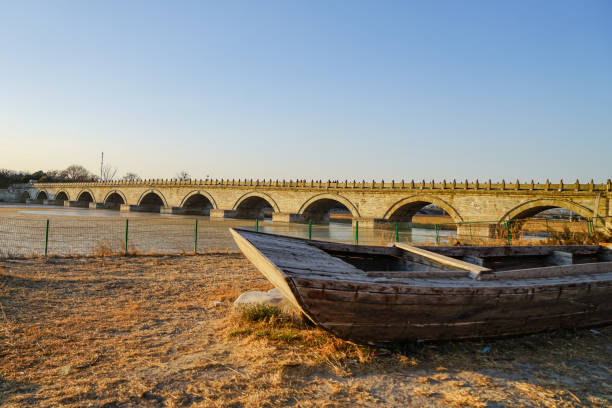
Lugou_Bridge_Wanping_City.
Tickets: Prices, Booking, and Tips
Visiting the historic Lugou Bridge (also known as Marco Polo Bridge) and the adjacent Wanping City offers international travelers a chance to delve into a significant piece of Chinese history and architecture. Here’s what you need to know about tickets, prices, booking, and some handy tips for your visit.
Ticket Information
-
Admission Fee: The entrance fee for Lugou Bridge is 20 RMB (approximately $3 USD). For those interested in exploring Wanping City, an additional ticket for the city gate is 5 RMB.
-
Opening Hours: The site is open daily from 7:30 AM to 7:00 PM. Be mindful that the last entry is at 6:30 PM, so plan your visit accordingly to fully appreciate the area.
Booking Tickets
Tickets can typically be purchased on-site at the entrance. However, during peak tourist seasons or public holidays, it may be wise to arrive early to avoid long lines. If you prefer to streamline your experience, consider booking through travel apps or websites that offer ticketing services, which can sometimes provide discounts or package deals.
Tips for Your Visit
-
Arrive Early: The best time to visit is early in the morning. This not only helps you beat the crowds but also allows you to capture stunning photographs of the bridge and its surroundings in the soft morning light.
-
Wear Comfortable Shoes: The cobblestone paths around the bridge can be uneven, so be sure to wear appropriate footwear to ensure comfort as you explore.
-
Explore Wanping City: Don’t miss the nearby Wanping City, which features well-preserved Ming and Qing architecture. The city walls and various historical buildings, including the Anti-Japanese War Memorial Museum, add depth to your visit.
-
Check for Events: Depending on the time of year, there may be cultural events or exhibitions happening at the site. It’s worth checking local listings or the venue’s official website for any special happenings during your visit.
-
Enjoy Scenic Views: The bridge is particularly beautiful at sunset. If you can, plan your visit to include this magical time of day.
-
Photography Etiquette: While capturing the beauty of Lugou Bridge and Wanping City, be respectful of other visitors and avoid obstructing pathways. Early morning and late afternoon provide the best lighting for photography.
-
Stay Hydrated: Make sure to carry water, especially during warmer months. There are limited refreshment options available in immediate proximity to the site.
With its rich history, stunning architecture, and serene atmosphere, a visit to Lugou Bridge and Wanping City is sure to be a memorable highlight of your trip to Beijing. Enjoy your journey through time!
How to Get There: A Complete Transportation Guide
Reaching Lugou Bridge (卢沟桥) and Wanping City (宛平城) is an adventure in itself, offering travelers a chance to explore some of Beijing’s rich history while enjoying a scenic journey. Situated approximately 15 kilometers southwest of Tiananmen Square, the site is well-connected and accessible via various modes of transportation.
By Public Transport
- Bus Services: The easiest way to get to Lugou Bridge is by taking one of the many bus routes that serve the area. Notable bus lines include:
- 983
- 739
- 971 (支)
- 759
- 661
- 662
- 301
- 339
- 624
- 310
- 809
- 748
- 715
- 937 (支)
- 309 (支)
Tip: You can disembark at the 雕塑园 (Sculpture Garden) bus stop, which is just a short walk from the bridge and the ancient city.
- Subway: While there isn’t a direct subway line to Lugou Bridge, you can take Line 9 to Guogongzhuang Station and then transfer to a bus or taxi to cover the remaining distance.
By Taxi or Ride-Hailing Services
If you prefer a more direct and comfortable route, taxis and ride-hailing apps like Didi are readily available throughout Beijing. This option is particularly convenient if you’re traveling in a group or prefer door-to-door service. The ride from central Beijing to Lugou Bridge typically takes around 30 minutes, depending on traffic.
By Car
For those who wish to drive, renting a car is a viable option. The journey is straightforward:
– From Tiananmen Square, head southwest and take the JingShi Expressway (京石高速公路).
– Exit at the Lugou Bridge exit and follow the signs to the bridge.
Parking: Ample parking is available near the site, making it easy for visitors arriving by car.
Tips for Your Journey
- Best Timing: If you’re looking to avoid the crowds, plan your visit during early morning hours. The serenity of the bridge at sunrise is a beautiful experience.
- Comfortable Footwear: The area around Lugou Bridge can involve quite a bit of walking, especially when exploring Wanping City. Make sure to wear comfortable shoes.
- Admission Fees: Entry to Lugou Bridge is affordable, with tickets priced at around 20 yuan. Wanping City has a small fee of about 5 yuan for access to the city gate.
Conclusion
Whether you choose public transport, a taxi, or a personal vehicle, getting to Lugou Bridge and Wanping City is hassle-free. The journey not only leads you to a historic site but also offers a glimpse into the vibrant life of Beijing beyond its bustling center. Enjoy your visit, and take a moment to appreciate the timeless beauty of this iconic bridge and the stories it holds!
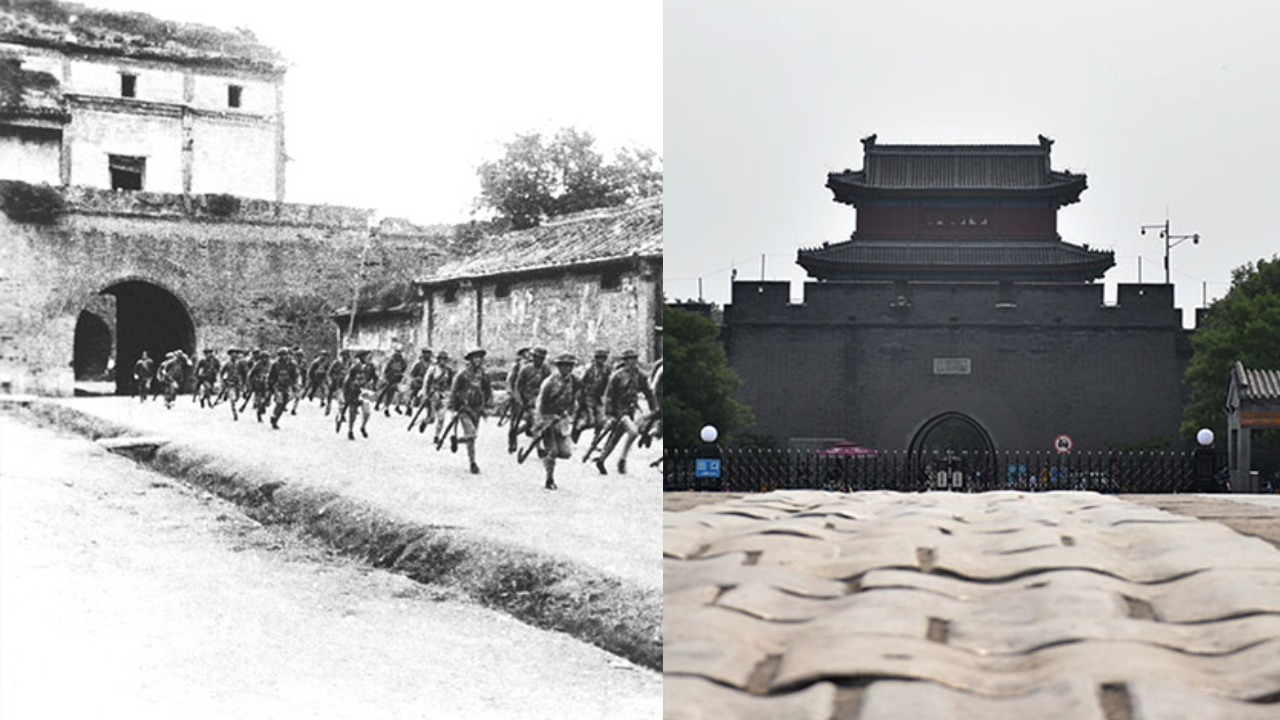
Lugou_Bridge_Wanping_City.
Local Cuisine and Accommodation Nearby
When visiting the historic Lugou Bridge and Wanping City, you’ll find yourself immersed not just in rich history, but also in delightful local cuisine and comfortable accommodations. Here’s a guide to help you savor the flavors and rest well during your exploration.
Culinary Delights
1. Peking Duck at Quanjude (全聚德)
A trip to Beijing wouldn’t be complete without indulging in the world-famous Peking Duck. Quanjude is an iconic establishment that has been serving this delicacy since the Qing Dynasty. The crispy skin and tender meat are complemented by thin pancakes, sweet bean sauce, and fresh vegetables. Located about a 20-minute drive from Lugou Bridge, it’s a must-visit for food lovers.
2. Yangrou Chuan (羊肉串) at Wangfujing Snack Street
Experience the flavors of Beijing with delicious lamb skewers, a popular street food. Wangfujing Snack Street offers a vibrant atmosphere filled with various local snacks and specialties. Grab a few skewers and enjoy them while strolling through this bustling market, just a 30-minute taxi ride from the bridge.
3. Hot Pot at Haidilao (海底捞)
For a unique dining experience, head to Haidilao, renowned for its hot pot. You can select from a variety of broths and a vast array of fresh ingredients. The attentive staff and complimentary snacks while you wait make it an enjoyable spot to gather and feast. This restaurant is approximately 30 minutes away by car.
4. Local Snacks at Huguosi Street Snack Street (护国寺小吃)
Located near the iconic Guozijian, Huguosi Street offers a variety of local snacks including fried dough sticks, sweet bean curd, and dumplings. This vibrant food street is about a 25-minute drive from Lugou Bridge, making it perfect for a quick bite after exploring the historical sites.
Comfortable Stays
1. Fengtaijun Hotel (丰台军酒店)
Just a few kilometers from Lugou Bridge, Fengtaijun Hotel offers cozy accommodations with modern amenities. It provides a convenient base for exploring nearby attractions while ensuring you have a restful stay. The hotel is known for its friendly staff and reasonable prices.
2. Beijing Wanping Hotel (北京宛平酒店)
Located in Wanping City, this hotel offers a unique experience with its historical decor and proximity to the bridge. Enjoy spacious rooms and traditional Chinese hospitality. The hotel is also within walking distance of local eateries, making it a great choice for travelers.
3. Hilton Beijing (北京希尔顿酒店)
For those seeking luxury, the Hilton Beijing is an excellent option. Located about a 30-minute drive from Lugou Bridge, this hotel offers upscale amenities, multiple dining options, and a beautiful swimming pool. It’s perfect for travelers looking for comfort and convenience.
4. Beijing Shijia Inn (北京施家客栈)
If you prefer a more homely atmosphere, consider staying at Beijing Shijia Inn. This charming guesthouse is not only affordable but also close to several local attractions. The warm ambiance and personalized service make it a delightful place to relax after a day of exploration.
With a variety of culinary experiences and comfortable accommodations nearby, your visit to Lugou Bridge and Wanping City will surely be memorable. Enjoy the rich flavors and rich history that this area has to offer!
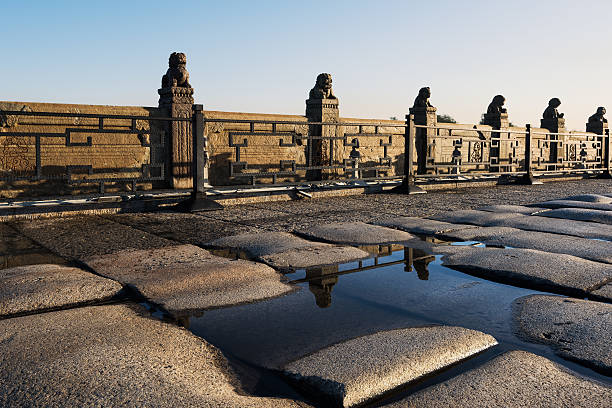
Lugou_Bridge_Wanping_City.
Frequently Asked Questions
Frequently Asked Questions
1. What is the historical significance of Lugou Bridge?
Lugou Bridge, also known as Marco Polo Bridge, is one of China’s four famous ancient bridges. Built during the Jin Dynasty in the late 12th century, it holds immense historical importance, particularly as the site where the Marco Polo once praised its unique beauty. It is also infamously known for the Lugou Bridge Incident on July 7, 1937, which marked the beginning of the Second Sino-Japanese War.
2. How do I get to Lugou Bridge from central Beijing?
Lugou Bridge is located about 15 kilometers southwest of Tiananmen Square. You can take public transportation such as buses 983, 739, or 971 to the “Sculpture Park” stop. Alternatively, taxis and ride-sharing services are widely available in Beijing for a more direct route.
3. What are the opening hours and ticket prices for visiting?
The bridge is open daily from 7:30 AM to 7:00 PM, with entry allowed until 6:30 PM. The entrance fee is a modest 20 RMB. For those wishing to explore the nearby Wanping City, an additional ticket may be required.
4. Are there any recommended times to visit for fewer crowds?
To enjoy a more tranquil experience, it is best to visit early in the morning or later in the afternoon. These times typically see fewer tourists, allowing for a more serene atmosphere and better opportunities for photography.
5. What should I wear while visiting Lugou Bridge?
Comfortable footwear is highly recommended, as the bridge has uneven surfaces. The weather can vary, so dress in layers and consider bringing a hat or sunscreen for sunny days, and an umbrella or raincoat if rain is in the forecast.
6. Is there anything unique to see or do at Lugou Bridge?
Yes! The bridge features 501 exquisitely carved stone lions, each uniquely designed. You can also explore the nearby Wanping City, which retains many ancient buildings from the Ming and Qing dynasties, and visit the Anti-Japanese War Memorial Museum located within the city for a deeper understanding of the region’s history.
7. Can I take photographs at the site?
Absolutely! Lugou Bridge is a fantastic spot for photography, especially with its stunning stone sculptures and historical backdrop. However, be respectful of other visitors and the historical significance of the site while taking photos.
8. Are there any dining options nearby?
There are various local eateries around Lugou Bridge and Wanping City where you can try traditional Beijing dishes. For a more extensive dining experience, consider heading back towards downtown Beijing, where a wider variety of restaurants can be found.
Final Thoughts on Your Trip
As you wrap up your visit to the magnificent Lugou Bridge and the historic Wanping City, take a moment to reflect on the rich tapestry of history and culture that surrounds you. This remarkable site is not just a bridge; it stands as a testament to resilience and artistry, echoing the stories of those who walked its stones centuries ago. The intricate stone lions, the delicate carvings, and the deep historical significance of this area invite you to connect with the past in a way that few places can.
Whether you find yourself mesmerized by the sunset casting golden hues over the bridge or moved by the solemn history of the Anti-Japanese War memorials, Lugou Bridge offers a unique blend of beauty and reflection. Embrace the tranquil atmosphere as you stroll across the bridge, allowing its spirit to wash over you.
In a city bustling with modern life, Lugou Bridge and Wanping City provide a serene escape, reminding us of the enduring strength of culture and history. As you leave, carry with you not just memories, but a deeper appreciation for the stories etched into the stones and the lives they represent. May your journey inspire you to explore more of what this beautiful world has to offer, seeking out the hidden gems that speak to the heart of humanity. Safe travels!